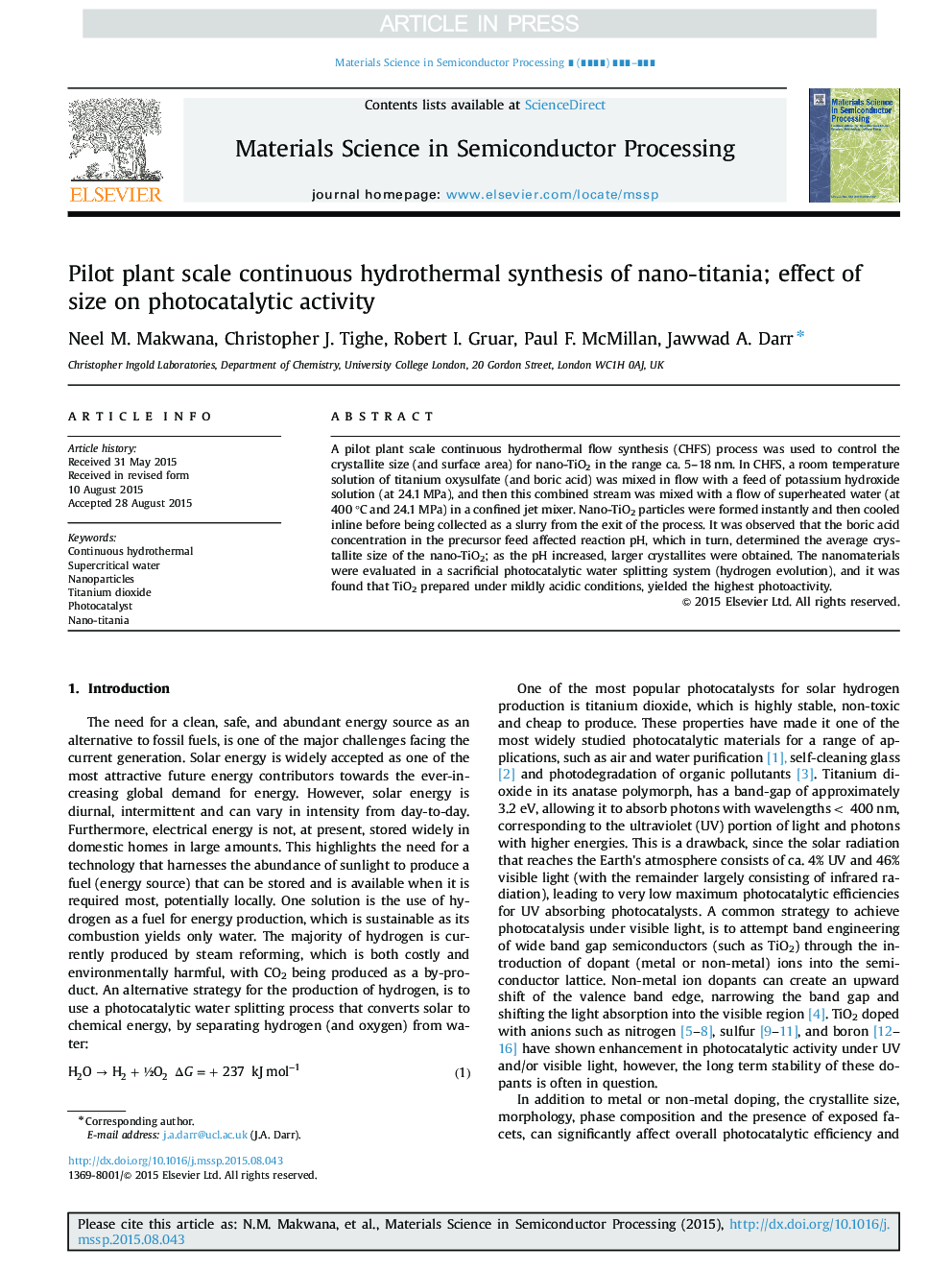| Article ID | Journal | Published Year | Pages | File Type |
|---|---|---|---|---|
| 10407113 | Materials Science in Semiconductor Processing | 2016 | 6 Pages |
Abstract
A pilot plant scale continuous hydrothermal flow synthesis (CHFS) process was used to control the crystallite size (and surface area) for nano-TiO2 in the range ca. 5-18 nm. In CHFS, a room temperature solution of titanium oxysulfate (and boric acid) was mixed in flow with a feed of potassium hydroxide solution (at 24.1 MPa), and then this combined stream was mixed with a flow of superheated water (at 400 °C and 24.1 MPa) in a confined jet mixer. Nano-TiO2 particles were formed instantly and then cooled inline before being collected as a slurry from the exit of the process. It was observed that the boric acid concentration in the precursor feed affected reaction pH, which in turn, determined the average crystallite size of the nano-TiO2; as the pH increased, larger crystallites were obtained. The nanomaterials were evaluated in a sacrificial photocatalytic water splitting system (hydrogen evolution), and it was found that TiO2 prepared under mildly acidic conditions, yielded the highest photoactivity.
Related Topics
Physical Sciences and Engineering
Engineering
Electrical and Electronic Engineering
Authors
Neel M. Makwana, Christopher J. Tighe, Robert I. Gruar, Paul F. McMillan, Jawwad A. Darr,
